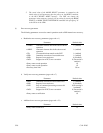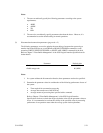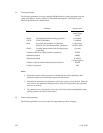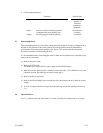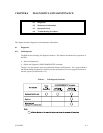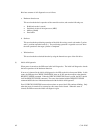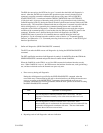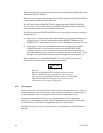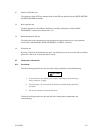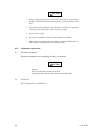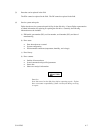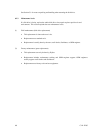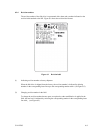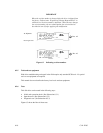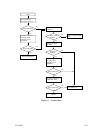
6-4 C141-E205
When all specified self-diagnostics terminate normally, the IDD posts the GOOD status for the
SEND DIAGNOSTIC command.
When an error is detected in the self-diagnostics, the IDD terminates the SEND DIAGNOSTIC
command with the CHECK CONDITION status.
The INIT should issue the REQUEST SENSE command when the CHECK CONDITION
status is posted. The sense data collected by the REQUEST SENSE command indicates the
detail information of the error detected in the self-diagnostics.
The IDD status after the CHECK CONDITION status is posted differs according to the type of
the detected error.
a) When an error is detected in the seek or write/read test, the subsequent command can be
accepted correctly. When the command other than the REQUEST SENSE and NO
OPERATION is issued from the same INIT, the error information (sense data) is cleared.
b) When an error is detected in the hardware function test, the IDD posts the CHECK
CONDITION status for all I/O operation request except the REQUEST SENSE
command. The error status is not cleared even if the error information (sense data) is
read. Only when the power is turned off or re-turned on, the status can be cleared. When
this status is cleared, the IDD executes the initial self-diagnostics again (see item (1)).
Refer to Subsection 3.4.1 “SEND DIAGNOSTIC (1D)” in the SCSI Logical Interface
Specifications for further details of the command specifications.
CAUTION
Data loss
When the SEND DIAGNOSTIC command terminates with the
CHECK CONDITION status, the INIT must collect the error
information using the REQUEST SENSE command. The RECEIVE
DIAGNOSTIC RESULTS command cannot read out the error
information detected in the self-diagnostics.
6.1.2 Test programs
The basic operations of the IDD itself can be checked with the self-diagnostic function. However,
to check general operations such as the host system and interface operations in a status similar to
the normal operation status, a test program that runs on the host system must be used.
The structure and functions of the test program depend on the user system requirements.
Generally, it is recommended to provide a general input/output test program that includes SCSI
devices connected to the SCSI bus and input/output devices on other I/O ports.
Including the following test items in the test program is recommended to test the IDD functions
generally.



